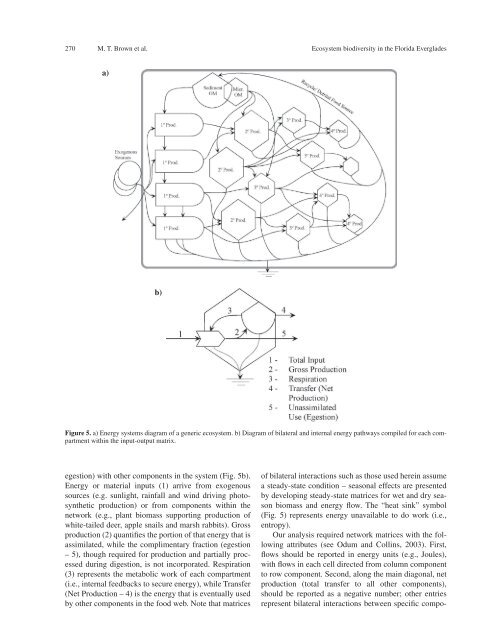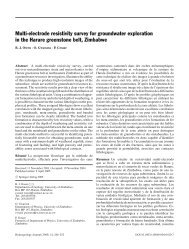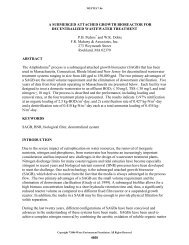Species diversity in the Florida Everglades, USA - Environmental ...
Species diversity in the Florida Everglades, USA - Environmental ...
Species diversity in the Florida Everglades, USA - Environmental ...
Create successful ePaper yourself
Turn your PDF publications into a flip-book with our unique Google optimized e-Paper software.
270 M. T. Brown et al. Ecosystem bio<strong>diversity</strong> <strong>in</strong> <strong>the</strong> <strong>Florida</strong> <strong>Everglades</strong><br />
a)<br />
b)<br />
Figure 5. a) Energy systems diagram of a generic ecosystem. b) Diagram of bilateral and <strong>in</strong>ternal energy pathways compiled for each compartment<br />
with<strong>in</strong> <strong>the</strong> <strong>in</strong>put-output matrix.<br />
egestion) with o<strong>the</strong>r components <strong>in</strong> <strong>the</strong> system (Fig. 5b).<br />
Energy or material <strong>in</strong>puts (1) arrive from exogenous<br />
sources (e.g. sunlight, ra<strong>in</strong>fall and w<strong>in</strong>d driv<strong>in</strong>g photosyn<strong>the</strong>tic<br />
production) or from components with<strong>in</strong> <strong>the</strong><br />
network (e.g., plant biomass support<strong>in</strong>g production of<br />
white-tailed deer, apple snails and marsh rabbits). Gross<br />
production (2) quantifi es <strong>the</strong> portion of that energy that is<br />
assimilated, while <strong>the</strong> complimentary fraction (egestion<br />
– 5), though required for production and partially processed<br />
dur<strong>in</strong>g digestion, is not <strong>in</strong>corporated. Respiration<br />
(3) represents <strong>the</strong> metabolic work of each compartment<br />
(i.e., <strong>in</strong>ternal feedbacks to secure energy), while Transfer<br />
(Net Production – 4) is <strong>the</strong> energy that is eventually used<br />
by o<strong>the</strong>r components <strong>in</strong> <strong>the</strong> food web. Note that matrices<br />
of bilateral <strong>in</strong>teractions such as those used here<strong>in</strong> assume<br />
a steady-state condition – seasonal effects are presented<br />
by develop<strong>in</strong>g steady-state matrices for wet and dry season<br />
biomass and energy fl ow. The “heat s<strong>in</strong>k” symbol<br />
(Fig. 5) represents energy unavailable to do work (i.e.,<br />
entropy).<br />
Our analysis required network matrices with <strong>the</strong> follow<strong>in</strong>g<br />
attributes (see Odum and Coll<strong>in</strong>s, 2003). First,<br />
fl ows should be reported <strong>in</strong> energy units (e.g., Joules),<br />
with fl ows <strong>in</strong> each cell directed from column component<br />
to row component. Second, along <strong>the</strong> ma<strong>in</strong> diagonal, net<br />
production (total transfer to all o<strong>the</strong>r components),<br />
should be reported as a negative number; o<strong>the</strong>r entries<br />
represent bilateral <strong>in</strong>teractions between specifi c compo-
















